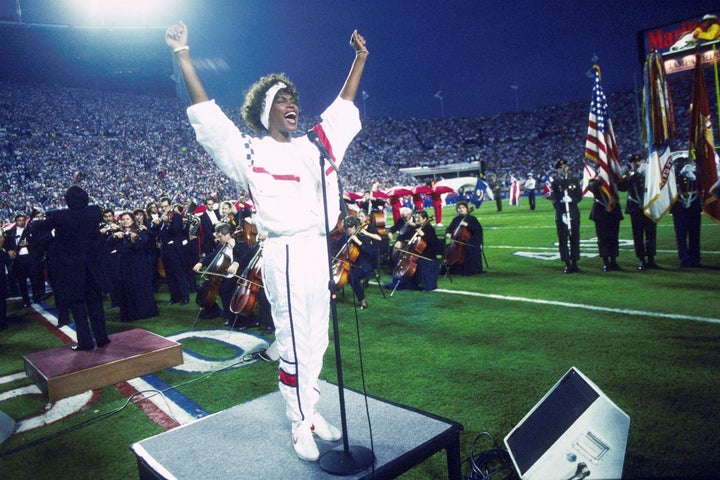
“Ladies and gentlemen, please rise for our national anthem.”
You’ll hear some version of this announcement at the start of most sporting events, whether they be professional, college or youth-level. The performance of the national anthem is a well-established part of American athletic competitions.
Yet “The Star-Spangled Banner” typically doesn’t make an appearance at many other public gatherings. We don’t sing or listen to it before concerts, Broadway shows, operas or lectures. So why do we do this for sports?
The answer goes back to America’s pastime: baseball.
First, of course, the national anthem began as a poem written by Francis Scott Key in September 1814, after he witnessed the British bombardment of Fort McHenry in Maryland during the War of 1812 (which lasted until early 1815).
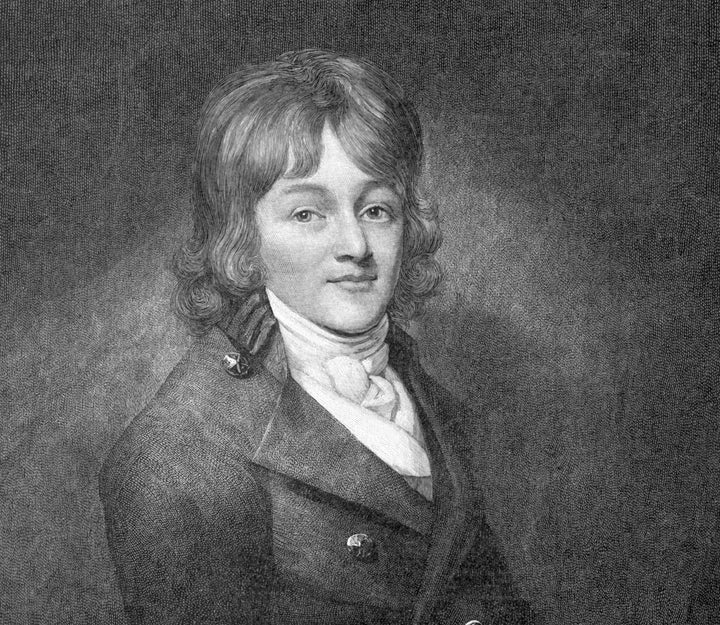
During the 19th century, the poem gained popularity as a song set to the tune of another popular song, “To Anacreon in Heaven.” It was performed at events like parades, military ceremonies, Independence Day festivities and, yes, occasionally, sporting events.
The earliest documented performance of “The Star-Spangled Banner” at a baseball game took place at the Union Baseball and Cricket Grounds in Brooklyn, New York, on May 15, 1862. It was the park’s opening game, and over time, playing the song on the opening day of the baseball season became a more widespread practice.
But singing “The Star-Spangled Banner” before every game did not become commonplace until later.
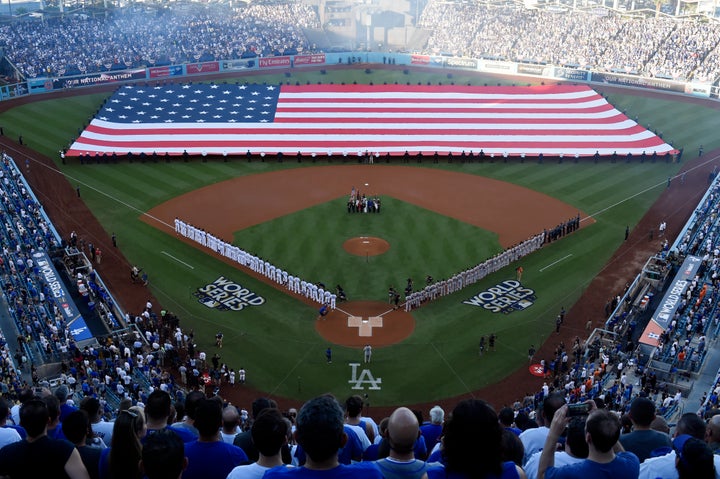
In 1889, Secretary of the Navy Benjamin F. Tracy signed an order directing that “The Star-Spangled Banner” be the official song to accompany any raising of the American flag by the Navy. In 1916, President Woodrow Wilson signed an executive order designating it as the country’s national anthem for patriotic occasions. But that status didn’t become truly official until 1931, when Congress passed a measure that President Herbert Hoover signed into law.
Historians typically point to one notable event when tracing the connection between the national anthem and sporting events: Game 1 of the 1918 World Series between the Boston Red Sox and Chicago Cubs.
It was the final year of World War I, a time when many professional baseball games featured marching drills, live bands and other patriotic elements. Given the strains of wartime, however, Game 1 was not well-attended, and the mood was reportedly somber.

During the seventh-inning stretch, however, the band lifted spectators’ spirits with a powerful performance of “The Star-Spangled Banner.” The New York Times recounted the moment:
As the crowd of 10,274 spectators — the smallest that has witnessed the diamond classic in many years — stood up to take their afternoon yawn, that has been the privilege and custom of baseball fans for many generations, the band broke forth to the strains of “The Star-Spangled Banner.”
The yawn was checked and heads were bared as the ball players turned quickly about and faced the music. Jackie Fred Thomas of the U.S. Navy was at attention, as he stood erect, with his eyes set on the flag fluttering at the top of the lofty pole in right field. First the song was taken up by a few, then others joined, and when the final notes came, a great volume of melody rolled across the field. It was at the very end that the onlookers exploded into thunderous applause and rent the air with a cheer that marked the highest point of the day’s enthusiasm.
The performance was so well-received that bands played the song during the subsequent games in the World Series that year. And from then on, “The Star-Spangled Banner” was a regular feature of special baseball occasions like opening day, national holidays and the World Series.
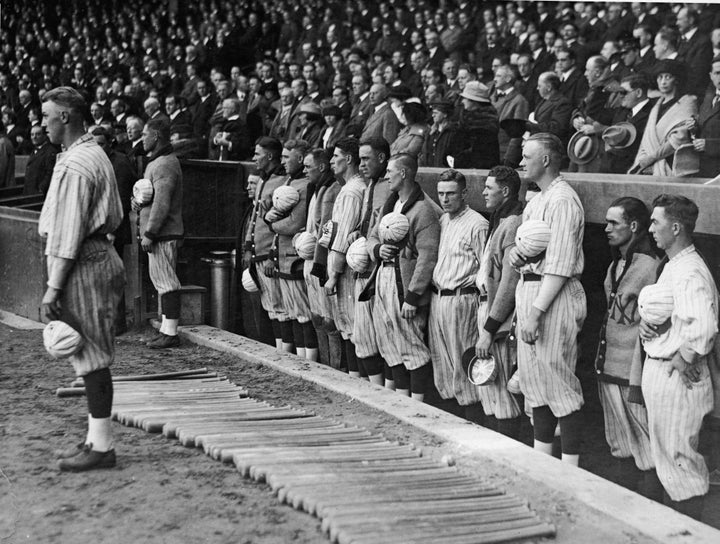
During World War II, playing the national anthem before regular baseball games became the norm, thanks to an upswing in patriotic sentiment and technological developments in sound systems that allowed for the playing of the song without the added expense of hiring a band.
The practice spread to other sports as well. After the war ended in 1945, NFL Commissioner Elmer Layden stated his intention to make “The Star-Spangled Banner” a permanent part of every football game.
“We must not drop it simply because the war is over. We should never forget what it stands for,” Layden declared.
Not everyone in the sports world agreed, however. In 1954, Baltimore Orioles general manager and World War I veteran Arthur Ehlers decided not to play “The Star-Spangled Banner” before each game and opted to save it for special occasions. He said that frequent repetition “tends to cheapen the song and lessen the thrill of response” and complained about fans not behaving respectfully during the anthem.
Under pressure from the public and the Baltimore City Council, Ehlers eventually changed his mind.
The owner of the Chicago Cubs felt similarly and did not include “The Star-Spangled Banner” as a standard element at home games until the 1960s during the Vietnam War. The Chicago White Sox replaced the anthem with “God Bless America” for a time in the ’60s but then returned to “The Star-Spangled Banner” after fans expressed their preference for it in an official poll.
With its evocations of warfare and patriotism, “The Star-Spangled Banner” has become a seemingly inextricable part of American sports culture ― and even pop culture, thanks to iconic moments like Whitney Houston’s powerful 1991 Super Bowl performance during the Gulf War.
“Sports are a kind of bloodless warfare,” Marc Ferris, author of Star-Spangled Banner: The Unlikely Story of America’s National Anthem, told USA Today last year. “A sort of war without death.”
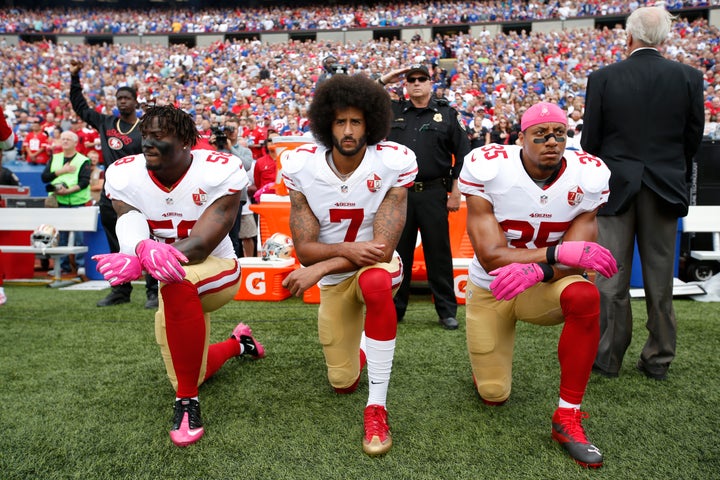
Over the years, the anthem has certainly played a part in cultural wars. Most recently, quarterback Colin Kaepernick’s decision to protest racial injustice by kneeling during “The Star-Spangled Banner” has been the subject of heated debate.
In 1968, Olympic athletes Tommie Smith and John Carlos were thrown out of Olympic Stadium in Mexico City after raising their fists in a Black Power salute as they stood on the medal podium during “The Star-Spangled Banner.”
Beyond political protests, actual musical performances of the anthem have generated controversy. In 1968, singer-songwriter José Feliciano kicked off Game 5 of the World Series with a bluesy version of the song, which drew complaints from fans expecting a more traditional rendition.
In 1990, comedian Roseanne Barr sang the anthem before a Major League Baseball game. She ended her “screechy, off-key” performance by grabbing her crotch and spitting on the ground. President George H.W. Bush called Barr’s rendition “disgraceful.”
And in February of this year, singer Fergie came under fire for her “sexy” performance of the anthem at the NBA All-Star Game.
For a song meant to unite the country, “The Star-Spangled Banner” can also be quite divisive ― which perhaps makes it all the more fitting for sports.
